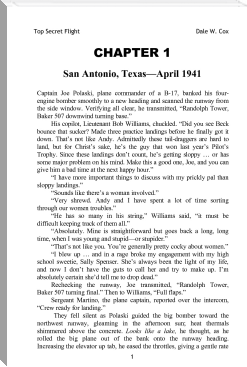Life in a Tank, Richard Haigh [top 10 novels TXT] 📗

- Author: Richard Haigh
- Performer: -
Book online «Life in a Tank, Richard Haigh [top 10 novels TXT] 📗». Author Richard Haigh
The Project Gutenberg EBook of Life in a Tank, by Richard Haigh
This eBook is for the use of anyone anywhere at no cost and with
almost no restrictions whatsoever. You may copy it, give it away or
re-use it under the terms of the Project Gutenberg License included
with this eBook or online at www.gutenberg.net
Title: Life in a Tank
Author: Richard Haigh
Release Date: March 13, 2009 [EBook #28319]
Language: English
*** START OF THIS PROJECT GUTENBERG EBOOK LIFE IN A TANK ***
Produced by Jeannie Howse and Friend, and the Online
Distributed Proofreading Team at http://www.pgdp.net (This
file was produced from images generously made available
by The Internet Archive/Canadian Libraries)
A TANK ON ITS WAY INTO ACTIONToList
HOUGHTON MIFFLIN COMPANY
The Riverside Press Cambridge
ALL RIGHTS RESERVED
Published June 1918
TANKS!
To the uninitiated—as were we in those days when we returned to the Somme, too late to see the tanks make their first dramatic entrance—the name conjures up a picture of an iron monster, breathing fire and exhaling bullets and shells, hurling itself against the enemy, unassailable by man and impervious to the most deadly engines of war; sublime, indeed, in its expression of indomitable power and resolution.
This picture was one of the two factors which attracted us toward the Heavy Branch Machine-Gun Corps—as the Tank Corps was known in the first year of its being. On the Somme we had seen a derelict tank, wrecked, despoiled of her guns, and forsaken in No Man's Land. We had swarmed around and over her, wild with curiosity, much as the Lilliputians must have swarmed around the prostrate Gulliver. Our imagination was fired.
The second factor was, frankly, that we were tired of going over the top as infantrymen. The first time that a man goes into an attack, he as a rule enjoys it. He has no conception of its horrors,—no, not horrors, for war possesses no horrors,—but, rather, he has no knowledge of the sudden realization of the sweetness of life that comes to a man when he is "up against it." The first time, it is a splendid, ennobling novelty. And as for the "show" itself, in actual practice it is more like a dream which only clarifies several days later, after it is all over. But to do the same thing a second and third and fourth time, is to bring a man face to face with Death in its fullest and most realistic uncertainty. In soldier jargon he "gets most awful wind up." It is five minutes before "Zero Hour." All preparations are complete. You are waiting for the signal to hop over the parapet. Very probably the Boche knows that you are coming, and is already skimming the sandbags with his machine guns and knocking little pieces of earth and stone into your face. Extraordinary, how maddening is the sting of these harmless little pebbles and bits of dirt! The bullets ricochet away with a peculiar singing hiss, or crack overhead when they go too high. The shells which burst on the other side of the parapet shake the ground with a dull thud and crash. There are two minutes to wait before going over. Then is the time when a man feels a sinking sensation in his stomach; when his hands tremble ever so slightly, and when he offers up a pathetic little prayer to God that if he's a bit of a sportsman he may be spared from death, should his getting through not violate the divine and fatalistic plans. He has that unpleasant lack of knowledge of what comes beyond. For after all, with the most intense belief in the world, it is hard to reconcile the comforting feeling of what one knows with that terrible dread of the unknown.
A man has no great and glorious ideas that nothing matters because he is ready to die for his country. He is, of course, ready to die for her. But he does not think about it. He lights a cigarette and tries to be nonchalant, for he knows that his men are watching him, and it is his duty to keep up a front for their sake. Probably, at the same time, they are keeping up a front for him. Then the Sergeant Major comes along, cool and smiling, as if he were out for a stroll at home. Suddenly he is an immense comfort. One forgets that sinking feeling in the stomach and thinks, "How easy and jolly he is! What a splendid fellow!" Immediately, one begins unconsciously to imitate him. Then another thinks the same thing about one, and begins to imitate too. So it passes on, down the line. But there is nothing heroic or exalting in going over the top.
This, then, was our possible second reason for preferring to attack inside bullet-proof steel; not that death is less likely in a tank, but there seems to be a more sporting chance with a shell than with a bullet. The enemy infantryman looks along his sight and he has you for a certainty, but the gunner cannot be so accurate and twenty yards may mean a world of difference. Above all, the new monster had our imaginations in thrall. Here were novelty and wonderful developments.
In the end of 1916, therefore, a certain number of officers and men received their orders to join the H.B.M.G.C., and proceeded sorrowfully and joyfully away from the trenches. Sorrowfully, because it is a poor thing to leave your men and your friends in danger, and get out of it yourself into something new and fresh; joyfully, because one is, after all, but human.
About thirty miles behind the line some villages were set aside for the housing and training of the new units. Each unit had a nucleus of men who had already served in tanks, with the new arrivals spread around to make up to strength.
The new arrivals came from all branches of the Service; Infantry, Sappers, Gunners, Cavalry, and the Army Service Corps. Each man was very proud of his own Branch; and a wonderfully healthy rivalry and affection sprang up between them. The gunner twitted the sapper, the cavalryman made jokes at the A.S.C., and the infantryman groused at the whole lot. But all knew at the bottom of their hearts, how each is essential to the other.
It was to be expected when all these varied men came together, that the inculcating of a proper esprit de corps—the training of each individual in an entirely new science for the benefit of the whole—would prove a very difficult and painstaking task. But the wonderful development, however, in a few months, of a large, heterogeneous collection of men into a solid, keen, self-sacrificing unit, was but another instance of the way in which war improves the character and temperament of man.
It was entirely new for men who were formerly in a regiment, full of traditions, to find themselves in the Tank Corps. Here was a Corps, the functions of which resulted from an idea born of the exigencies of this science-demanding war. Unlike every other branch of the Service, it has no regimental history to direct it, no traditions upon which to build, and still more important from a practical point of view, no experience from which to draw for guidance, either in training or in action. In the Infantry, the attack has resulted from a steady development in ideas and tactics, with past wars to give a foundation and this present one to suggest changes and to bring about remedies for the defects which crop up daily. With this new weapon, which was launched on the Somme on September 15, 1916, the tactics had to be decided upon with no realistic experimentation as ground work; and, moreover, with the very difficult task of working in concert with other arms of the Service that had had two years of fighting, from which to learn wisdom.
With regard to discipline, too,—of all things the most important, for the success of a battle has depended, does, and always will depend, upon the state of discipline of the troops engaged,—all old regiments have their staff of regular instructors to drill and teach recruits. In them has grown up that certain feeling and loyalty which time and past deeds have done so much to foster and cherish. Here were we, lacking traditions, history, and experience of any kind.
It is easy to realize the responsibility that lay not only upon the Chief of this new Corps, but upon each individual and lowest member thereof. It was for us all to produce esprit de corps, and to produce it quickly. It was necessary for us to develop a love of the work, not because we felt it was worth while, but because we knew that success or failure depended on each man's individual efforts.
But, naturally, the real impetus came from the top, and no admiration or praise can be worthy of that small number of men in whose hands the real destinies of this new formation lay; who were continually devising new schemes and ideas for binding the whole together, and for turning that whole into a highly efficient, up-to-date machine.
KING GEORGE AND QUEEN MARY INSPECTING A TANK ON THE BRITISH FRONT IN FRANCEToList
"How did the tank happen to be invented?" is a common question. The answer is that in past wars experience has made it an axiom that the defenders suffer more casualties than the attacking forces. From the first days of 1914, however, this condition was reversed, and whole waves of attacking troops were mown down by two or three machine guns, each manned, possibly, by not more than three men. There may be in a certain sector, before an attack, an enormous preliminary bombardment which is destined to knock out guns, observation posts, dumps, men, and above all, machine-gun emplacements. Nevertheless, it has





Comments (0)